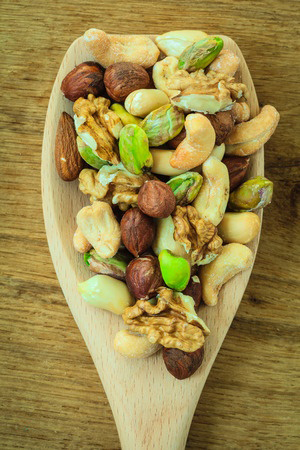 A multiplicity of protein choices have been around since the days of cavemen. Yet the trendiness of protein rises and falls thanks to changes in culture. In times of economic recession, it can be cost prohibitive to include typical high-quality proteins— like grass fed, organic beef— in every meal. Then there are the waves of health opinions that sweep the nation at different points in time, constantly altering the mindsets Americans have about traditional protein choices.
A multiplicity of protein choices have been around since the days of cavemen. Yet the trendiness of protein rises and falls thanks to changes in culture. In times of economic recession, it can be cost prohibitive to include typical high-quality proteins— like grass fed, organic beef— in every meal. Then there are the waves of health opinions that sweep the nation at different points in time, constantly altering the mindsets Americans have about traditional protein choices.
As, in recent years, individuals are becoming more educated and conscious about the nutrients in different foods, the country has been moving away from seeing protein solely as a side of beef—or, indeed, even a chicken breast or salmon steak. This awareness, when combined with various popular health fads like the paleo diet, has led to a surge in the popularity of protein in all forms, for all budgets and for more meals than ever before.
High Protein Meals
It seems as though, in this case, a fad diet has at least some basis in fact as the latest string of nutrition studies have promoted the health benefits of protein.
While diet trends rise and fall, high-quality protein breakfasts will always offer greater health perks than a high-carb meal, according to the American Journal of Clinical Nutrition. Several studies have discovered that eating a meal high in protein helps a person remain satiated for longer periods of time. The most popular protein of choice? Eggs: Boiled, scrambled, fried or poached, eggs are an easy and cost effective way to bolster the protein levels in your breakfast. According to Nikhil V. Dhurandhar, PhD and Pennington researcher, “studies show that when people eat eggs at breakfast, they feel more satisfied and consume fewer calories throughout the day, compared to those who eat a primarily carbohydrate meal like a bagel.”
Making a Protein Packed Move
The trend toward a snackification of meal times at an all-time high as an increasing number of consumers—especially those in the Millennial demographic— opt for smaller snacks multiple times throughout the day in lieu of full meals.
More and more frequently, those consumers are turning to protein-heavy foods to make their snacking more satisfying. In fact, protein has become key to not over-eating. Studies have shown that protein reduces ghrelin production, which is the hormone that sends messages to your brain that you are hungry, which helps you feel full until the next snacking time.
Protein in All Shapes and Sizes
As fad diets catch on and palates have diversified, more average consumers are realizing that foods other than red meats are healthier sources of protein and have actively begun searching out protein-rich foods. As Americans, as a whole, have become more health-conscious, shoppers are turning more and more to alternative sources of proteins like:
- Eggs with 6 grams in a large egg
- Ancient grains like quinoa or amaranth that can hold close to 30 grams of protein a cup
- Spirulina which packs 8 grams of protein into just 2 tablespoons of the dried seaweed
- Greek and low-fat yogurts that boast up to 17 grams in a cup serving
Companies are looking at new and innovative ways to grow or diversify market share, should consider ways to play to these trends. Supplement powders, in addition to the growing array of alternative protein foods, are, for example, a huge hit with certain wellness and lifestyle subcultures that have begun, as these are a fast and easy way to include a protein boost into a meal— or snack.
Here’s the Bottom Line
Whether you opt to supplement your current offerings or find ways to diversify your protein choices, current eating trends demand more protein.







